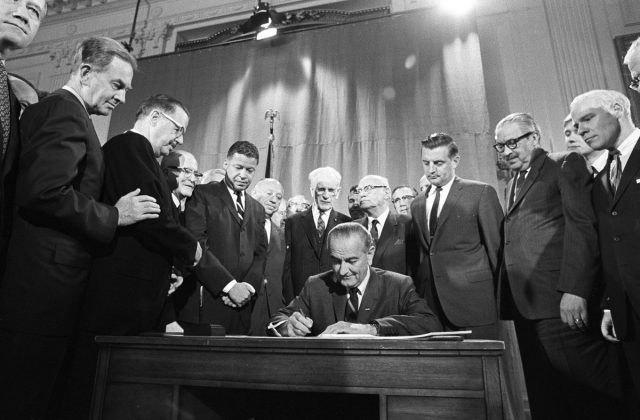Comments on the Fair Housing Act
I posted earlier about the comments I was putting together for the Department of Housing And Urban Development as they consider changes to the implementation of the Fair Housing Act. I’ll write more later about where this process goes, the history and future of the act, and what role the federal government might play in restoring some sanity to our housing discussion. But I’ll let these comments speak for themselves now.
I am submitting these comments on behalf of the Foundation for Research on Equal Opportunity (FREOPP). All FREOPP research considers the impact of public policies and proposed reforms on those with incomes or wealth below the U.S. median. Housing policy should favor solutions that are fair, efficient, and increase housing supply. We support more housing of all kinds in every neighborhood for people of all levels of income.
Introduction
Denying access to housing based on race is unacceptable and inconsistent with American and basic moral principles of fairness and equal opportunity. The Fair Housing Act (Act) enshrined these principles in 1968, and the implementation of the Act over the years has made strides toward eliminating discrimination in housing access.
But this progress has hit a hard barrier: the economic interests of incumbent homeowners have taken precedent over the need for more housing, especially in thriving, prosperous, and growing cities.
The intention of the Act – fairness – has been undermined by housing scarcity created by local governments seeking to protect the rising value of investments in single-family housing by restricting housing supply with rules, regulations, and taxes. Less housing means existing property owners see their investment rise.
However beneficial this is to people who are already housed, when housing is in short supply, prices and rents go up, consuming a greater share of household income. This, of course, disproportionately impacts households with less money. People of color in the United States own more poverty than white people; a Kaiser Family Foundation analysis of Census data found that 22 percent of black families and 20 percent of Hispanic families are in poverty compared to 9 percent of white families.
Therefore, restrictive land use and housing policies are, in fact and practice, discriminatory housing policy. Each and every limit or slow down of housing supply enacted by local government that is not for purposes of health and safety of residents or the community will mean higher prices, and those higher prices hurt families of color harder than white families.
Furthermore, ameliorating these restrictive policies through subsidies is unacceptable; buying down the high price of housing created by policies deliberately aimed at limiting housing supply means families with less money must wait in longer and longer lines for vouchers or units. Today’s system of off setting high prices with subsidies is a modern day iteration of separate but equal, two systems of housing, one for people who already own their homes and one for everyone else. The problem is, however, that the two systems aren’t equal at all, one serves incumbent homeowners and the other inefficiently distributes public funding for housing to people who have less money.
So as the Department of Housing and Urban Development (HUD) considers changes to the Affirmatively Furthering the Fair Housing Act (AFFHA) Regulations it must take into account the current state of local regulation: local governments are imposing restrictions on housing, calling the resulting shortage a crisis, then squeezing money for subsidies to off set the consequences of those restrictions. Not only is this illogical, it is unfair and discriminatory.
Approach
Going forward, HUD should emphasize outcomes for local governments rather than plans. We suggest considering an approach like the one offered by the Mercatus Center in comments by Salim Furth and Emily Hamilton. Using HUDs existing Fair Market Rent (FMR) calculation, growing cities that have rents that have risen faster than inflation over the last 5 years and have issued building permits for less than 5 percent net growth in housing units would not be eligible for Community Development Block Grants (CDBG).
Local communities also should consider and be allowed to use CDBG funds to reduce cost burden with direct subsidies to families under 30 percent of Area Median Income (AMI). These families and individuals are already housed, and direct cash assistance would help those families faster.
Jurisdictions seeking CDBG funding should have a list and proposed legislation or rule changes that would safely reduce burdens on housing supply by lowering costs and time to market as part of their application.
Conclusion
Funding from the CDBG program should be exclusively given to local jurisdictions that measure housing issues using established FMR and market data to analyze price trends, the impact that regulation has on prices, establish serious efforts to roll back and eliminate regulation that limits supply, and proposes models for subsidy dollars that are not reliant on capital expenditures but investment in reducing poverty and creating improved access to economic opportunity for families.


